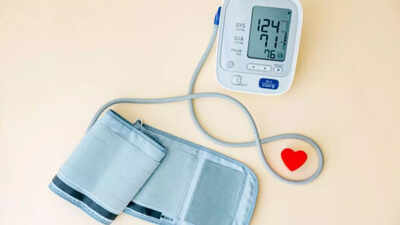Nearly 50% of Americans have hypertension, a condition caused by high blood pressure. It is the top risk factor for heart disease and stroke, and increases the risk of dementia and cognitive decline. What’s more shocking and concerning is that only 1 in 4 people with a history of high blood pressure have the condition under control.Preparing for your first MRI? Key precautions to keep in mindSelf-care tips that make living with eczema a little easierWorld Alzheimer’s Day 2025: The first signs families often missRecently, in August this year, the American Heart Association and the American College of Cardiology released new guidelines on the prevention and management of hypertension. These findings and suggestions are based on a comprehensive analysis of literature published over the past 10 years.
Below, find the key takeaways from the guidelines as analysed by Dr William Cornwell of the University of Colorado Anschutz Medical Campus with The Conversation U.S.
Poll
What do you think is the most effective way to control high blood pressure?
What are the key takeaways from the new guidelines?

Image credits: Getty Images
The definition of hypertension has seen a shift in the past few years. Now, the criteria are stricter and the target blood pressures are lower than before. The criteria depend on the systolic and diastolic blood pressure. While the former, the top number, represents the pressure in the blood vessels when the heart is pumping blood in the body, the latter, the bottom number is the pressure in the blood vessels when the heart is relaxing.The new guidelines have removed the category of “prehypertension,” which was defined by a systolic pressure of 120-139 millimeters of mercury (mm Hg), or a diastolic pressure of 80-99 mm Hg.Now, the patients are categorised as having “elevated blood pressure” if their blood pressure is 120-129 over less than 80 mm Hg or stage 1 hypertension if they are 130-139/80-89.Stage 2 hypertension is defined by a reading of 140/90 or more, and hypertensive crisis is signalled by a reading of 180/120 or greater.Now, people are advised to ask their doctors if they have hypertension based on this new criterion and whether or not they require treatment. They must also seek suggestions for changes in lifestyle such as diet, exercise and sleep habits to lower the blood pressure.Usage of a risk calculator called PREVENT (Predicting Risk of Cardiovascular Disease EVENTS) to prevent a person’s overall risk of cardiovascular disease and heart failure is also advised. It is free and available online and incorporates several factors, including demographics, cholesterol levels, medical history and blood pressure, to determine risk.
Limit alcohol intake to prevent high blood pressure

Image credits: Getty Images
One of the major points in the guidelines is to limit the intake of alcohol because it elevates blood pressure.Systolic blood pressure increases about 1mmHg for every 10g of alcohol, according to a 2023 meta-analysis of seven studies with 20,000 participants. A standard beer contains about 14g of alcohol and thus blood pressure may increase with alcohol consumption over time.For those who don’t want to completely avoid alcohol, the new guidelines recommend that men should drink no more than two drinks per day, and women should drink no more than one drink per day.
DASH diets for hypertension

Image credits: Getty Images
The guidelines emphasise the role of diets in impacting blood pressure. They recommend that all adults with or without hypertension consume less than 2,300 milligrams of salt per day, ideally less than 1,500 milligrams a day.The guidelines recommend a diet called the DASH diet which stands for Dietary Approaches to Stop Hypertension. It emphasises the consumption of fruits, vegetables, low-fat or non-fat dairy and whole grains.
Physical activity to the rescue

Image credits: Getty Images
There is a high need for Americans to increase physical activity. On average, for every 30 minutes of additional aerobic exercise a person does every week, systolic blood pressure is reduced by 2mmHg and diastolic blood pressure drops by 1mmHg.
Eight essential behaviours to control blood pressure

Image credits: Getty Images
According to the American Heart Association, eight essential health behaviours must be followed to control blood pressure and reduce the risk of cardiovascular disease. These are:
- Healthy diet
- Regular exercise,
- Stopping or avoiding smoking
- Sleeping seven to nine hours per night
- Controlling weight, cholesterol, blood sugar and blood pressure

:max_bytes(150000):strip_icc()/VWH-GettyImages-1415329133-ff4b84ca4b8f468a80d24ba27ee7fb59.jpg)
